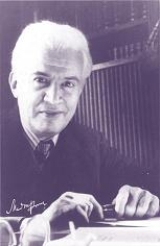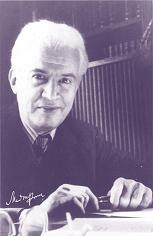
Manuel Maria Ponce
Encyclopedia

Mexico
The United Mexican States , commonly known as Mexico , is a federal constitutional republic in North America. It is bordered on the north by the United States; on the south and west by the Pacific Ocean; on the southeast by Guatemala, Belize, and the Caribbean Sea; and on the east by the Gulf of...
composer
Composer
A composer is a person who creates music, either by musical notation or oral tradition, for interpretation and performance, or through direct manipulation of sonic material through electronic media...
active in the 20th century. His work as a composer, music educator and scholar of Mexican music connected the concert scene with a usually forgotten tradition of popular song and Mexican folklore. Many of his compositions are strongly influenced by the harmonies and form of traditional songs.
Early years
Born in FresnilloFresnillo
Fresnillo /fres'nijo/ , founded in 1554 by Francisco de Ibarra, is the second largest city in Zacatecas state, north central Mexico...
, Zacatecas
Zacatecas
Zacatecas officially Estado Libre y Soberano de Zacatecas is one of the 31 states which, with the Federal District, comprise the 32 Federal Entities of Mexico. It is divided in 58 municipalities and its capital city is Zacatecas....
, Ponce moved with his family to the city of Aguascalientes
Aguascalientes, Aguascalientes
The city of Aguascalientes is the capital of the state of Aguascalientes in western central Mexico. It stands on the banks of the Río Aguascalientes, 1880 meters above sea level, at...
only a few weeks after his birth and lived there until he was 15 years old.
He was famous for being a "musical prodigy"; according to his biographers, he was barely four years of age when, after having listened to the piano classes received by his sister, Josefina, he sat in front of the instrument and interpreted one of the pieces that he had heard. Immediately, his parents had him receive classes in piano and musical notation.
Traveling years
In 1901 Ponce entered the National Conservatory of MusicNational Conservatory of Music (Mexico)
The National Conservatory of Music of Mexico is a music conservatory located in the Polanco section of Mexico City, Federal District, Mexico.-History:...
, already with a certain prestige as a pianist and composer. There he remained until 1903, the year in which he returned to the city of Aguascalientes. This was only the beginning of his travels. In 1904 he traveled to Italy for advanced musical studies at the School of Bologna.
He studied in Germany as a pupil of Martin Krause
Martin Krause
Martin Krause was a German concert pianist, piano teacher, music critic, and writer.- Career :Martin Krause was born in Lobstädt, Saxony as the youngest son of the choirmaster and church schoolmaster Johann Carl Friedrich Krause in Lobstädt...
at the Stern conservatory
Stern conservatory
The Stern Conservatory was a private music school in Berlin with many notable tutors and alumni.-History:It was originally founded in 1850 as the Berliner Musikschule by Julius Stern, Theodor Kullak and Adolf Bernhard Marx. Kullak withdrew from the conservatory in 1855 in order to create a new...
in Berlin between 1906 and 1908.
Years at the National Conservatory
After his years abroad, Ponce returned to Mexico to teach piano and music history at the National Conservatory of Music from 1909 to 1915 and from 1917 to 1922. He spent the intervening years of 1915 to 1917 in Havana, Cuba.In 1912 he composed his most famous work "Estrellita" (little star), which is not a normal love song, as is usually thought, but "Nostalgia Viva" (live nostalgia).
That same year, Ponce gave in the "Arbeau Theater" a memorable concert of Mexican popular music which, though it scandalized ardent defenders of European classical music, became a landmark in the history of the national song.
Heitor Villa-Lobos
Heitor Villa-Lobos
Heitor Villa-Lobos was a Brazilian composer, described as "the single most significant creative figure in 20th-century Brazilian art music". Villa-Lobos has become the best-known and most significant Latin American composer to date. He wrote numerous orchestral, chamber, instrumental and vocal works...
(1887-1959), who met Ponce in Paris in the 1920s, wrote
With valuable activity promoting music of the country and writing melodías like "Estrellita", "A la orilla de un palmar", "Alevántate", "La Pajarera", "Marchita el Alma" and "Una Multitud Más", Ponce gained the honorific title Creator of the Modern Mexican Song. He was also the first Mexican composer to project popular music onto the world stage: "Estrellita", for example, has been part of the repertoire of the main orchestras of the world and countless singers, although quite often the interpreter ignores the origin of the song as well as its author.
In 1947 he received the National Science and Arts Prize
National Science and Arts Prize
The National Prize for Arts and Sciences is awarded annually by the Government of Mexico in six categories. It was established in 1945...
.
He was married to Clementina Maurel, next to whom he died in Mexico City
Mexico City
Mexico City is the Federal District , capital of Mexico and seat of the federal powers of the Mexican Union. It is a federal entity within Mexico which is not part of any one of the 31 Mexican states but belongs to the federation as a whole...
.
His body was buried in the Roundhouse of the Illustrious Men in the Pantheon of Dolores in Mexico City
Mexico City
Mexico City is the Federal District , capital of Mexico and seat of the federal powers of the Mexican Union. It is a federal entity within Mexico which is not part of any one of the 31 Mexican states but belongs to the federation as a whole...
. In his honor there is a board of recognition by the state of Aguascalientes at the base of the column of The Exedra, next to the fountain from a spring dedicated to this musical poet, in the city of Aguascalientes where he grew up and first studied music.
Recordings
Ponce participated in the following recordings:- Manuel María Ponce: Concierto para piano y orquesta (Ponce on piano; Orquesta Sinfónica de México; conducted by Carlos Chávez) (Radio Mil, 1942)
Music
Ponce wrote music for solo instruments, chamber ensembles, and orchestra. His piano and guitar works outnumber those dedicated to other solo instruments within the set of pieces we know.Guitar music
Ponce's guitar music is a core part of the instrument's repertory, the best-known works being Variations and Fugue on 'La Folia' (1929) and Sonatina meridional (1939). He also wrote a guitar concerto Concierto del sur, which is dedicated to his long-time friend and guitar virtuoso Andrés SegoviaAndrés Segovia
Andrés Torres Segovia, 1st Marquis of Salobreña , known as Andrés Segovia, was a virtuoso Spanish classical guitarist from Linares, Jaén, Andalucia, Spain...
. His last known work, Variations on a Theme of Cabezón, was written in 1948, a few months before his death. It is unclear whether the variations are indeed based upon a theme by Antonio de Cabezón or if the theme was the work of Ponce's teacher, the organist Enrico Bossi.
- Canciones populares mexicanas, La pajarera, Por ti mi Corazon, La valentina
- Sonata mexicana (1925)
- Thème varié et Finale (1926)
- Sonata III (1927)
- Sonata clásica (1928)
- Sonata romántica (1929)
- Suite en la Mineur (1929)
- Variations and Fugue on 'La Folia' (1929)
- Valse (1937)
- Sonatina meridional (1939)
- Variations on a Theme of Cabezón (1948)
- Dos Vinetas (post-humous)
It was Ponce who anonymously created the striking arrangement for guitar of J. S. Bach's Prelude from the first cello suite as performed and recorded by Segovia. Ponce also composed the prelude for lute ascribed by Segovia on record and program notes to lutenist/Bach contemporary S. L. Weiss. Segovia recorded this piece both as a solo and as a duet, performed with harpsichordist Rafael Puyana. Check with Christopher Parkening for verification.
Piano works
According to some mythogical oral testimonies and contemporary press, the composer was himself an extremely developed piano performer.- Quatro Danzas Mexicanas
- Intermezzo
- Balada MexicanaBalada MexicanaBalada Mexicana is a 1915 musical composition by Mexican composer Manuel M. Pounce....
Version for Piano solo and Piano and Orchestra - Mazurcas
- Concierto romántico
- Scherzino a Debussy
- Scherzino mexicano
- Estudios de concierto
- Elegía de la ausencia
- Tema mexicano variado
- Suite cubana
- Concerto para piano
- Rapsodia Cubana
- Rapsodias Mexicanas
Songs
Ponce interacted with many important artists from the Mexican vocal scene during- Adiós mi bien
- Aleluya
- Alevántate
- Cerca de tí
- Cinco poemas chinos
- Cuatro poemas de F.A. de Icaza
- Dos poemas alemanes
- Dos poemas de B. Dávalos
- Estrellita (1912)
- Forse
- Ho bisogno
- Insomnio
- Isaura de mi amor
- La pajarera
- Lejos de tí
- Lejos de tí II
- Marchita el alma
- Necesito
- Ofrenda
- Poema de primavera
- Por tí mi corazón
- Romanzeta
- Sperando, sognando
- Seis poemas aracáicos
- Serenata mexicana
- Soñó mi mente loca
- Tal vez
- Toi
- Tres poemas de E. González Martínez
- Tres poemas de M. Brull
- Tres poemas de Lermontow
- Tres poemas de R. Tagore
- Tres poemas franceses
- Tú
- Último ensueño
- Una multitud más
Folk Song Arrangements
- A la orilla de un palmar
- A ti va
- Acuérdate de mí
- Adiós mi bien
- Ah, que bonito
- Cerca de mí
- Cielito lindo
- Cuiden su vida
- China de mi alma
- De tres flores
- Dolores hay
- Dos seres hay
- El bracero
- El desterrado
- Estrella del norte
- Hace ocho meses
- La barca del marino
- La despedida
- La ola
- Palomita
- La palma
- La peña
- La visita
- Nunca, nunca
- Ojitos aceitunados
- Oye la voz
- Para amar sin consuelo
- Para qué quiero la vida
- Perdí un amor
- Perdida ya toda esperanza
- Pobre del hombre pobre
- Por esas calles
- Por tí mujer
- Que chulos ojos
- Que lejos ando
- Que pronto
- Quisiera morir
- Si alguna vez
- Si eres receuerdo
- Si algúna ser
- Son las horas
- Soy paloma errante
- Te amo
- Todo pasó
- Trigueña hermosa
- Valentina
- Ven oh luna
- Vengo a saber si tú me amas
- Voy a partir
- Ya sin tu amor
- Yo me propuse
- Yo mismo no comprendo
- Yo te quiero
Chamber music
- Miniatures for violin, viola and cello (1927)
- Quartet for violin, viola and cello (1932)
- Sonata a dúo for violin and viola (1936–1938)
- Trio for violin, viola and cello (1943)
- Trio romántico for violin, cello and piano
- Canción de otoño for violin and piano
- Sonata for cello and piano
- Sonata for guitar and harpsichord
Orchestral works
- Chapultepec
- Cantos y danzas de los antiguos mexicanos
- Instantáneas mexicanas
- Poema elegíaco
- Ferial
Concertos
- Concierto Romántico for piano and orchestra (1910)
- Concierto del sur for guitar and orchestra (1941)
- Concierto para violín y orquesta (1943)
Media
External links
- International Jose Guillermo Carrillo Foundation
- Peermusic Classical: Manuel Ponce Composer's Publisher and Bio
- Manuel Ponce and the Suite in A minor: Its Historical Significance and an Examination of Existing Editions (2005) by Kevin R. Manderville
- Ponce's Baroque Pastiches, by Peter Kun Frary, Professor of Music - University of HawaiiUniversity of HawaiiThe University of Hawaii System, formally the University of Hawaii and popularly known as UH, is a public, co-educational college and university system that confers associate, bachelor, master, and doctoral degrees through three university campuses, seven community college campuses, an employment...

